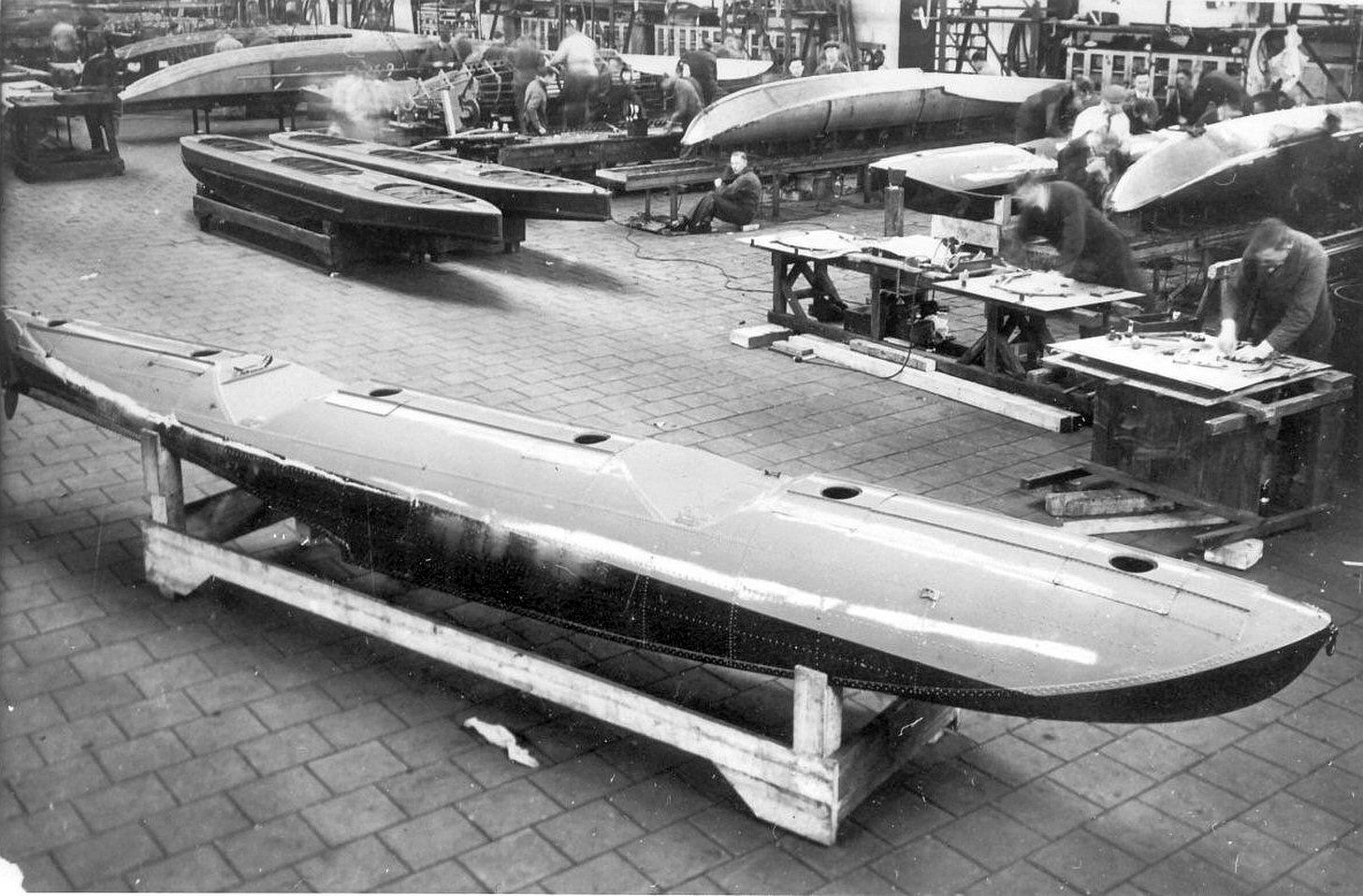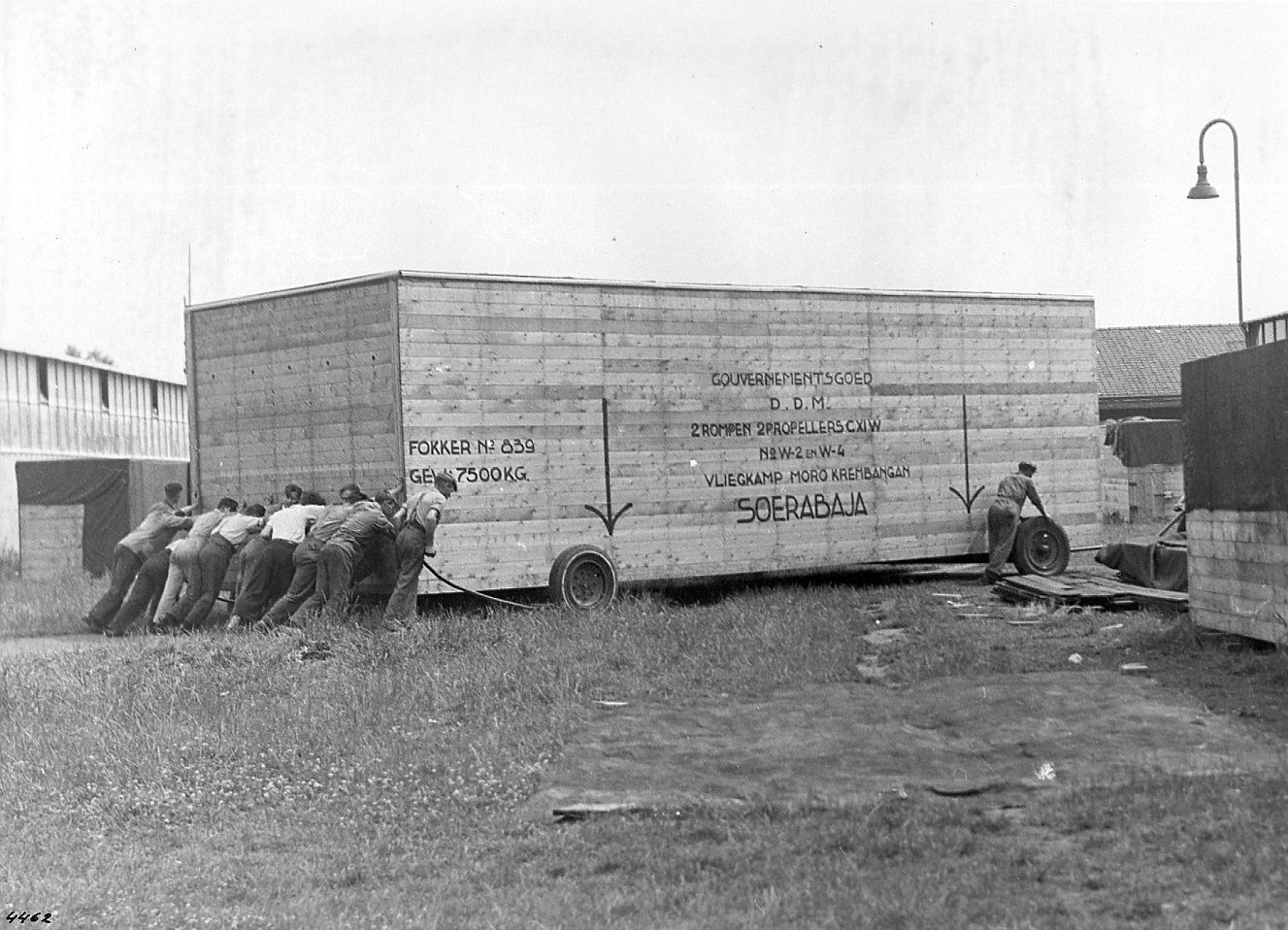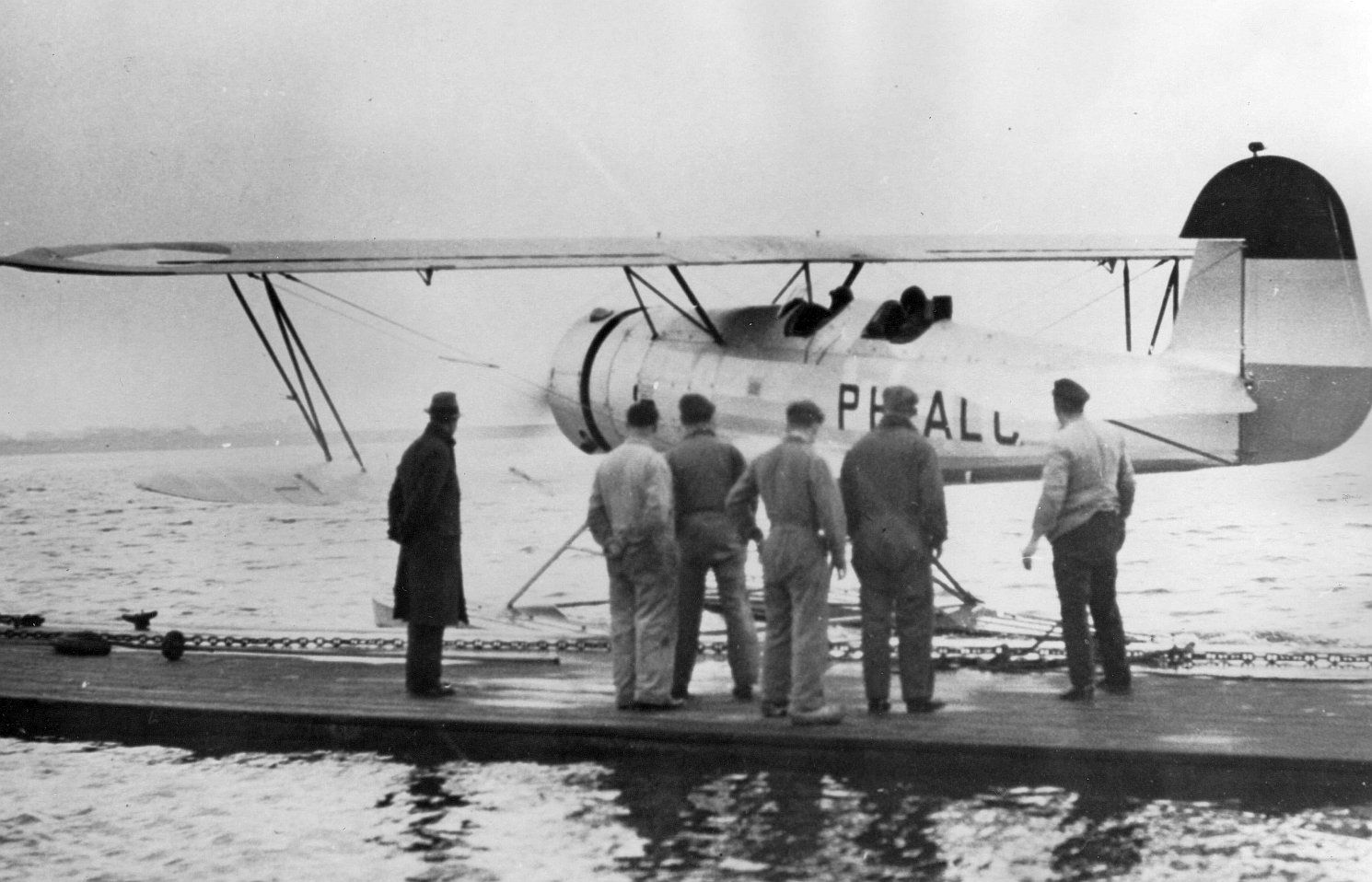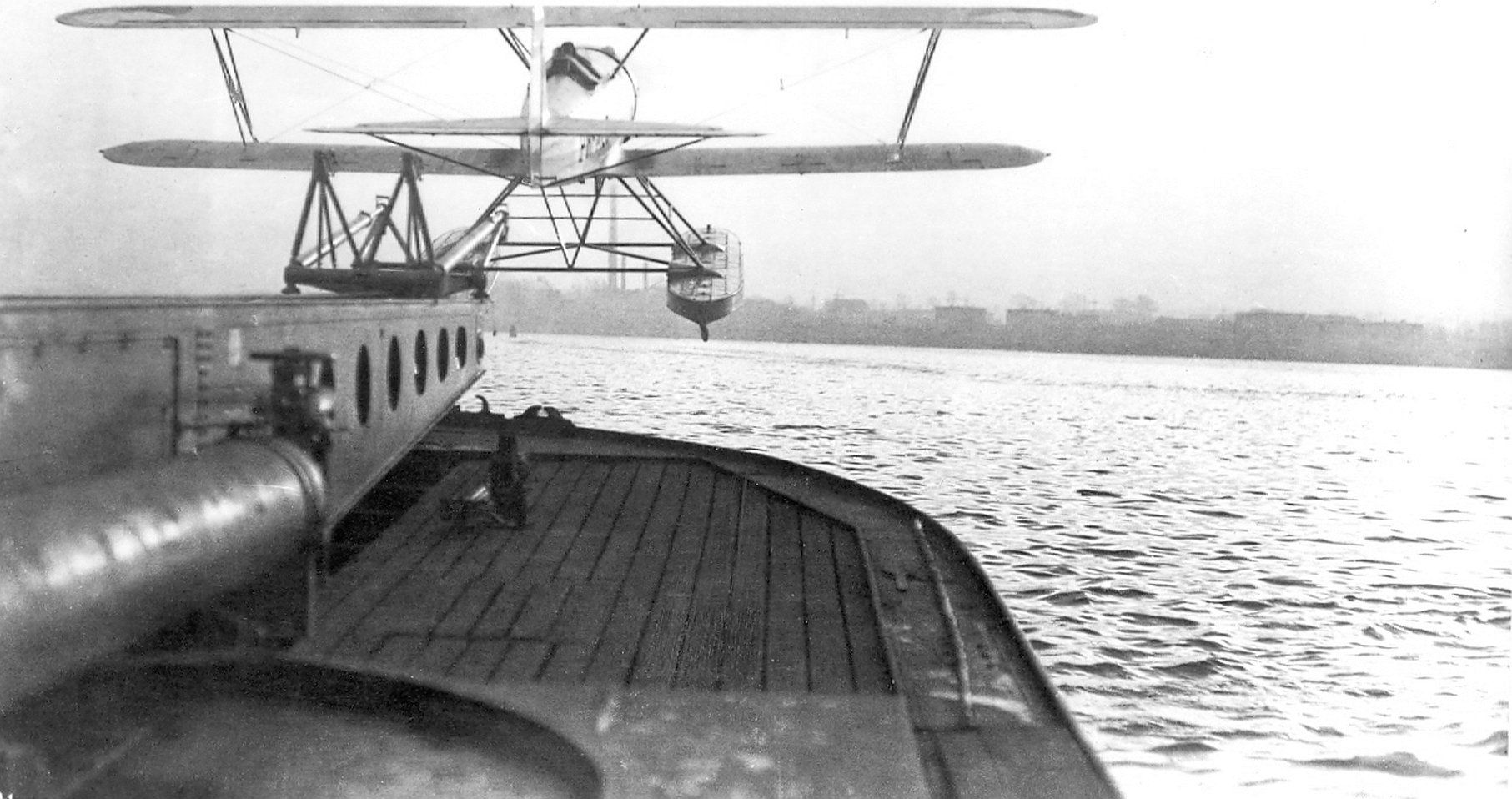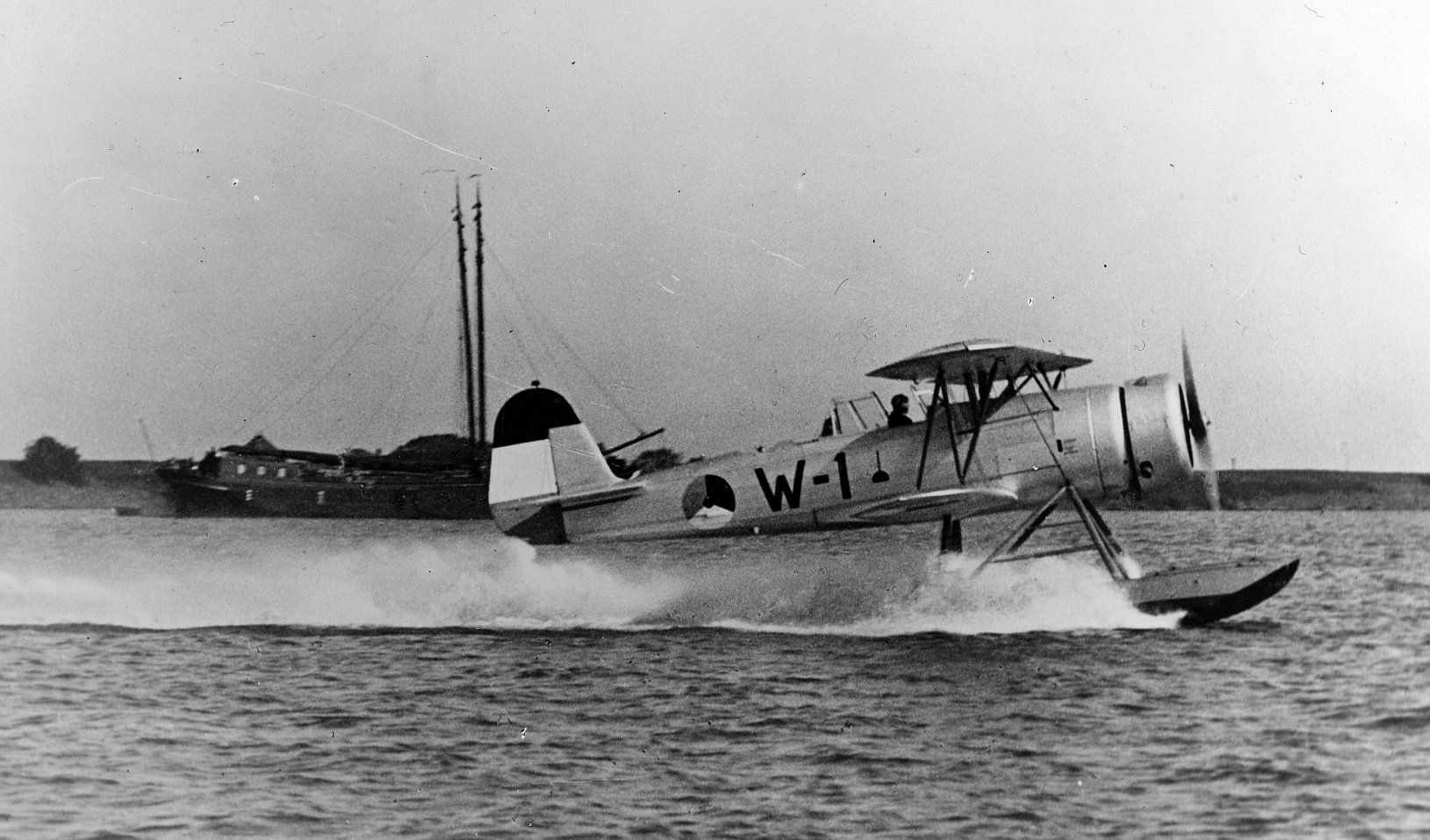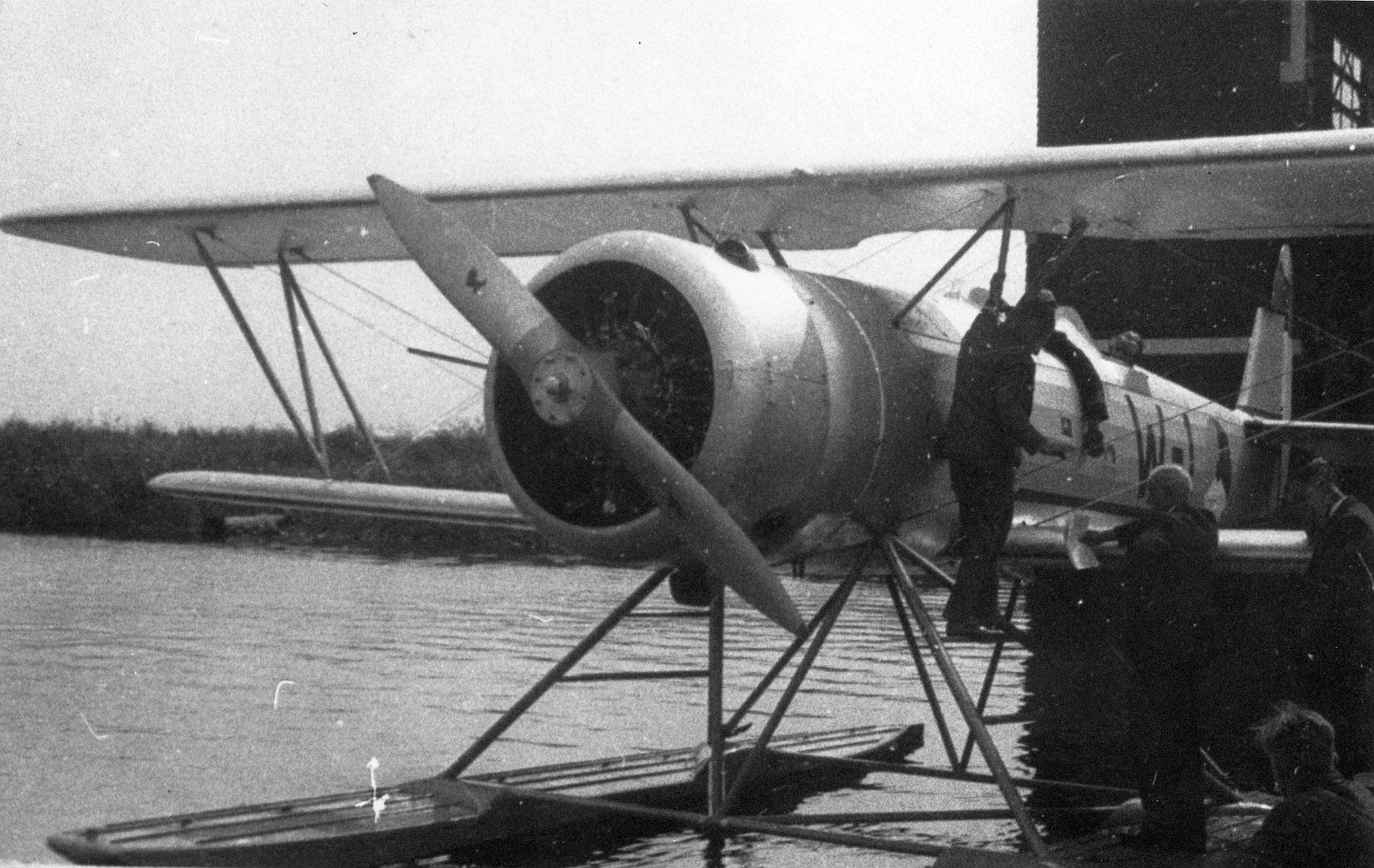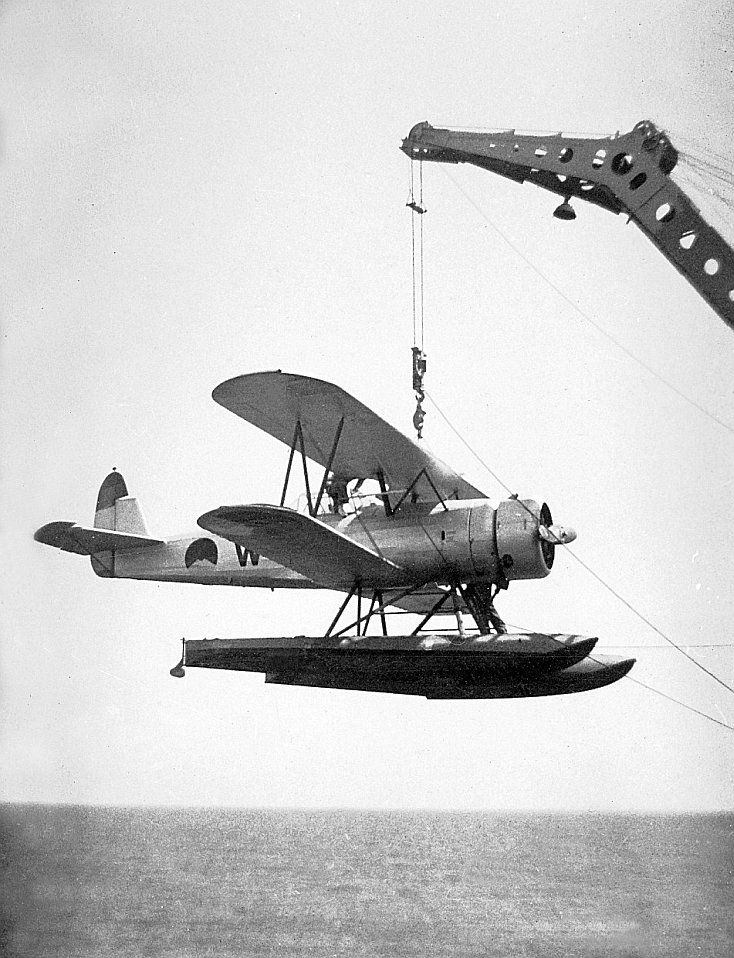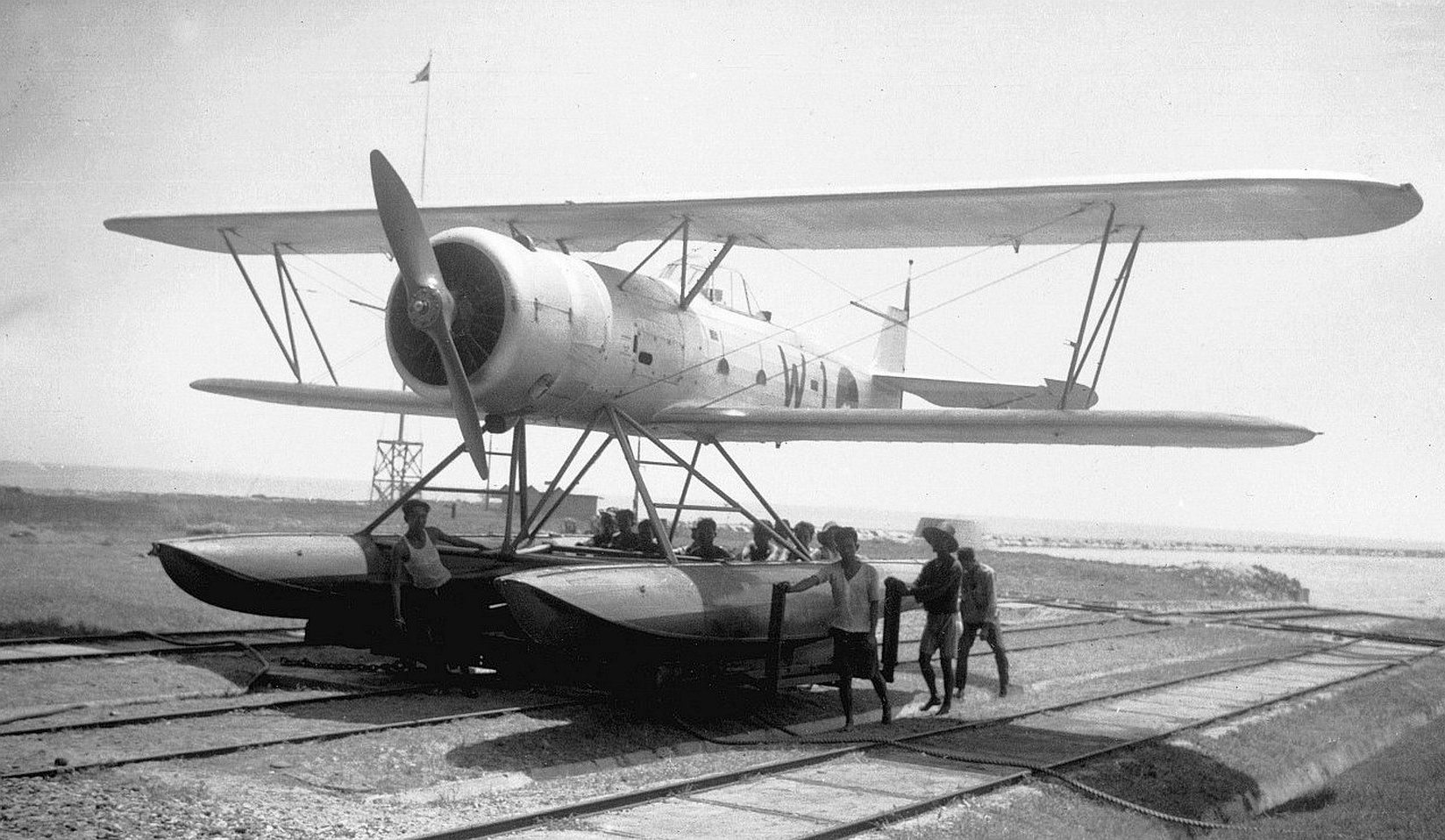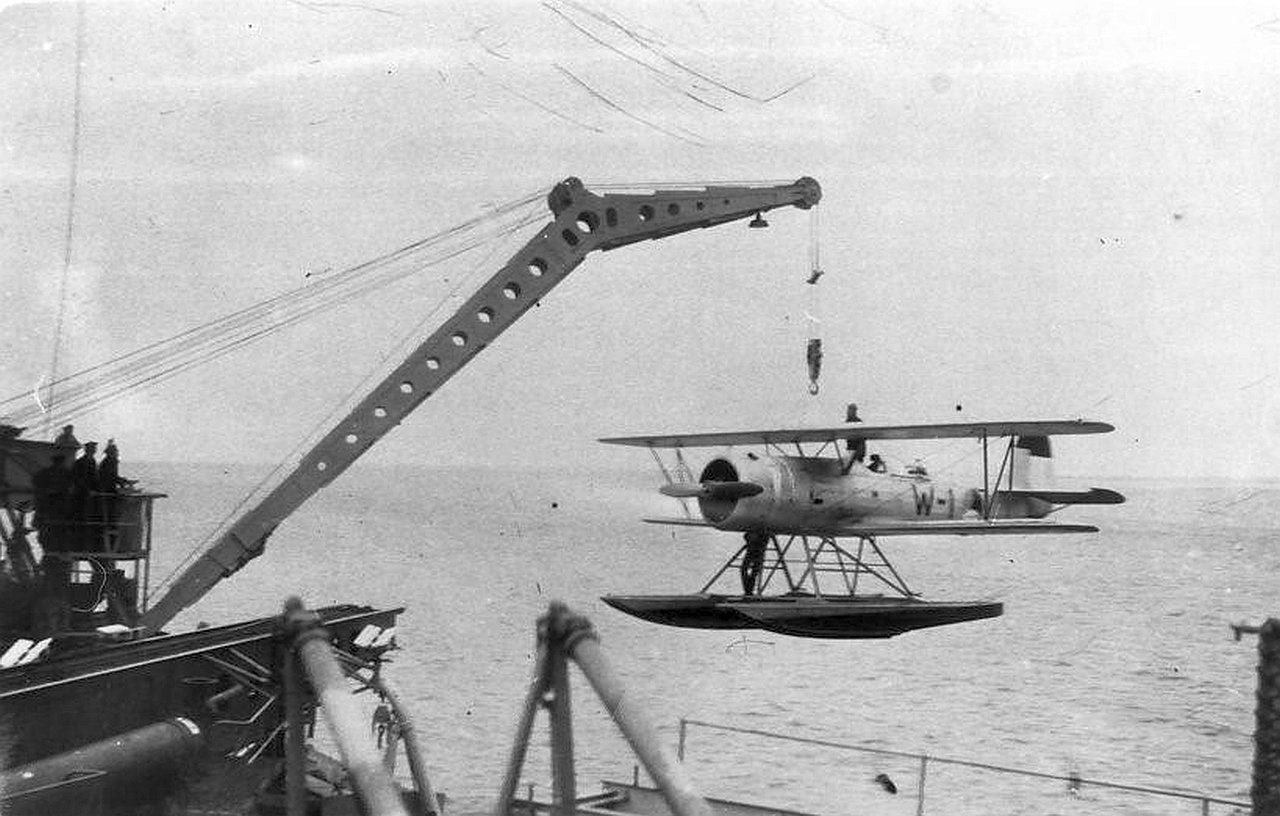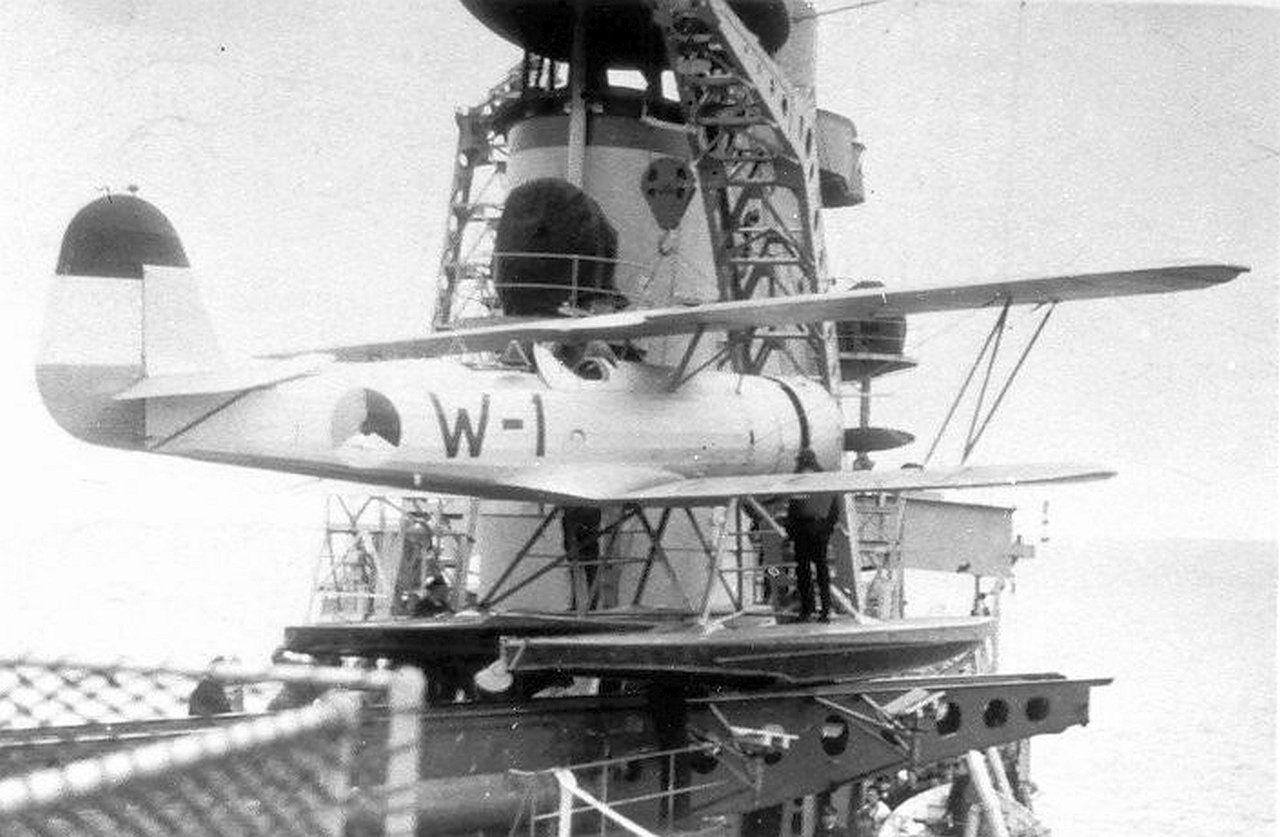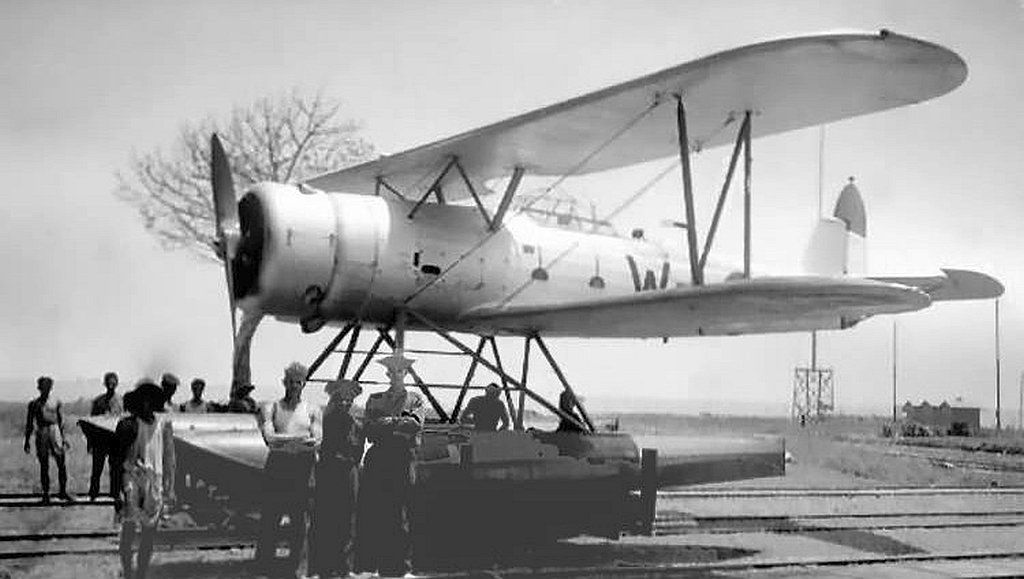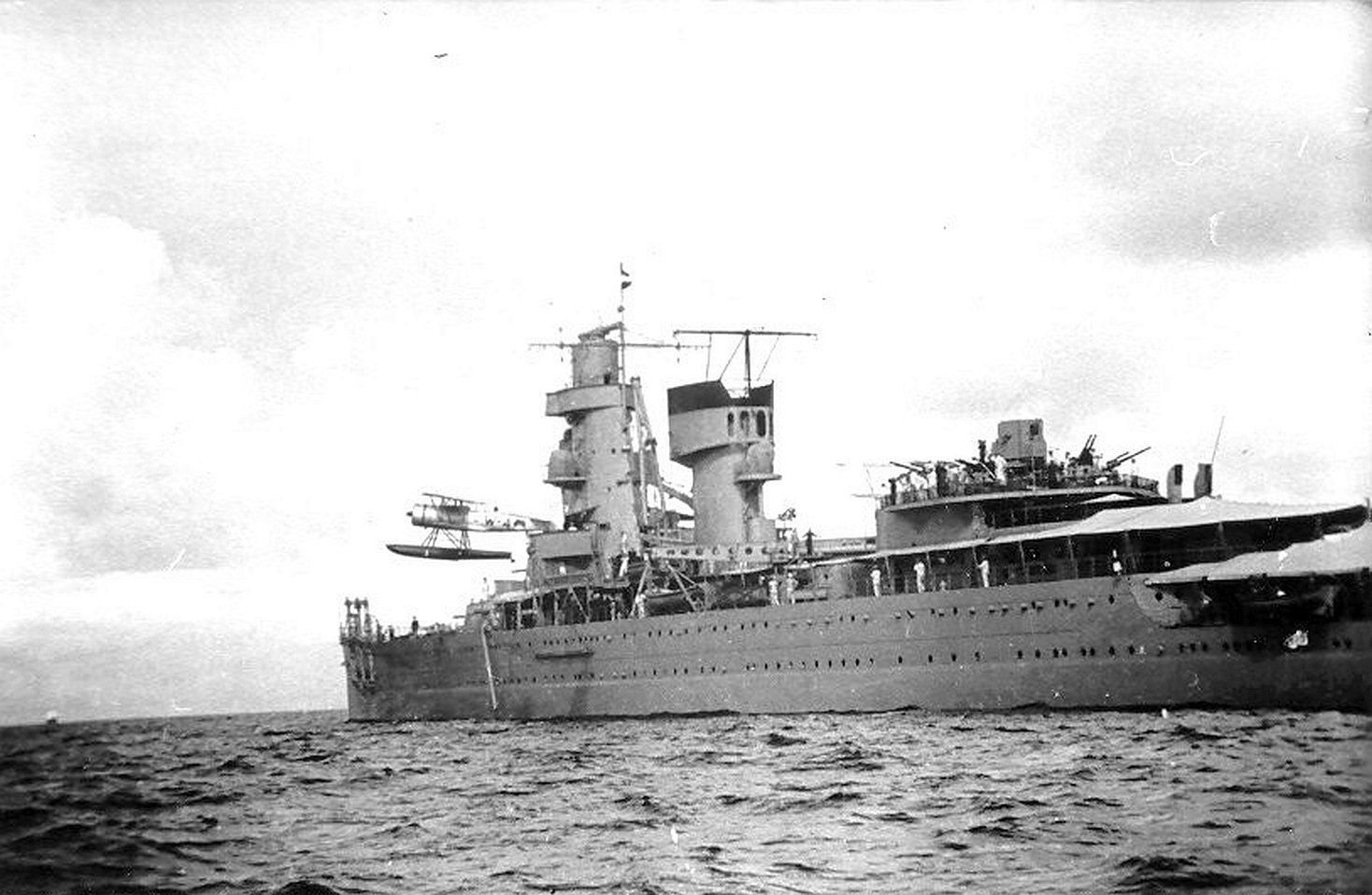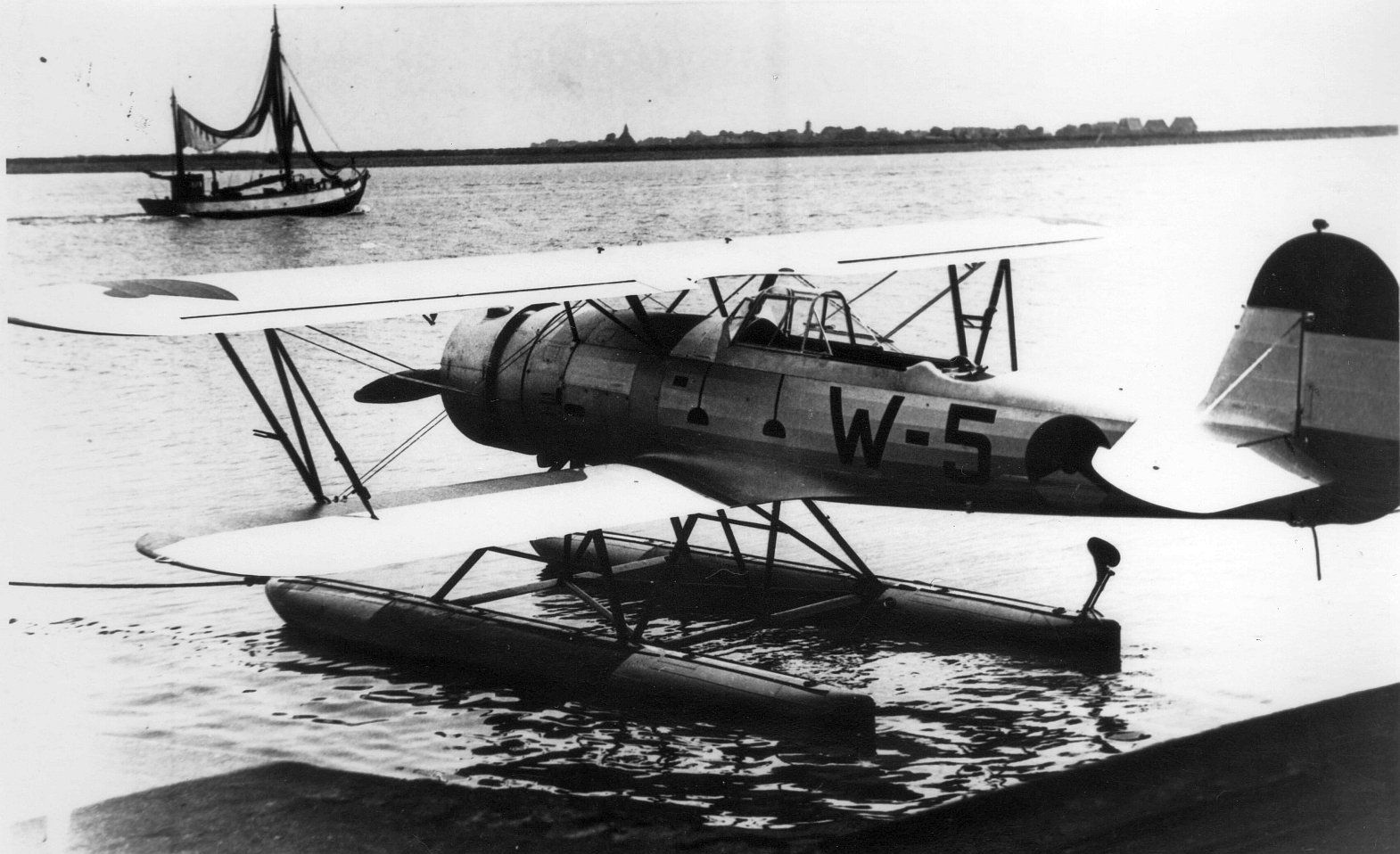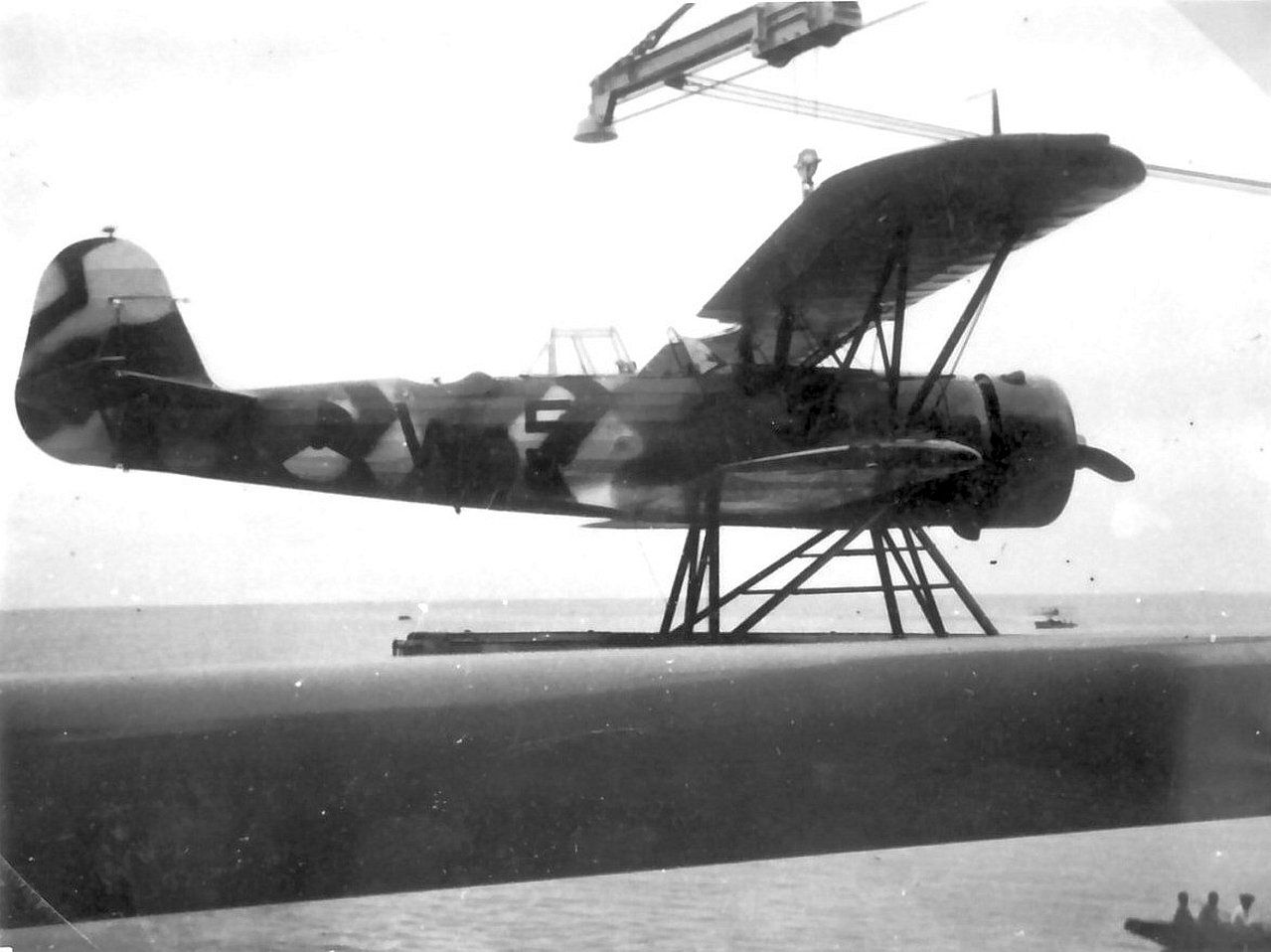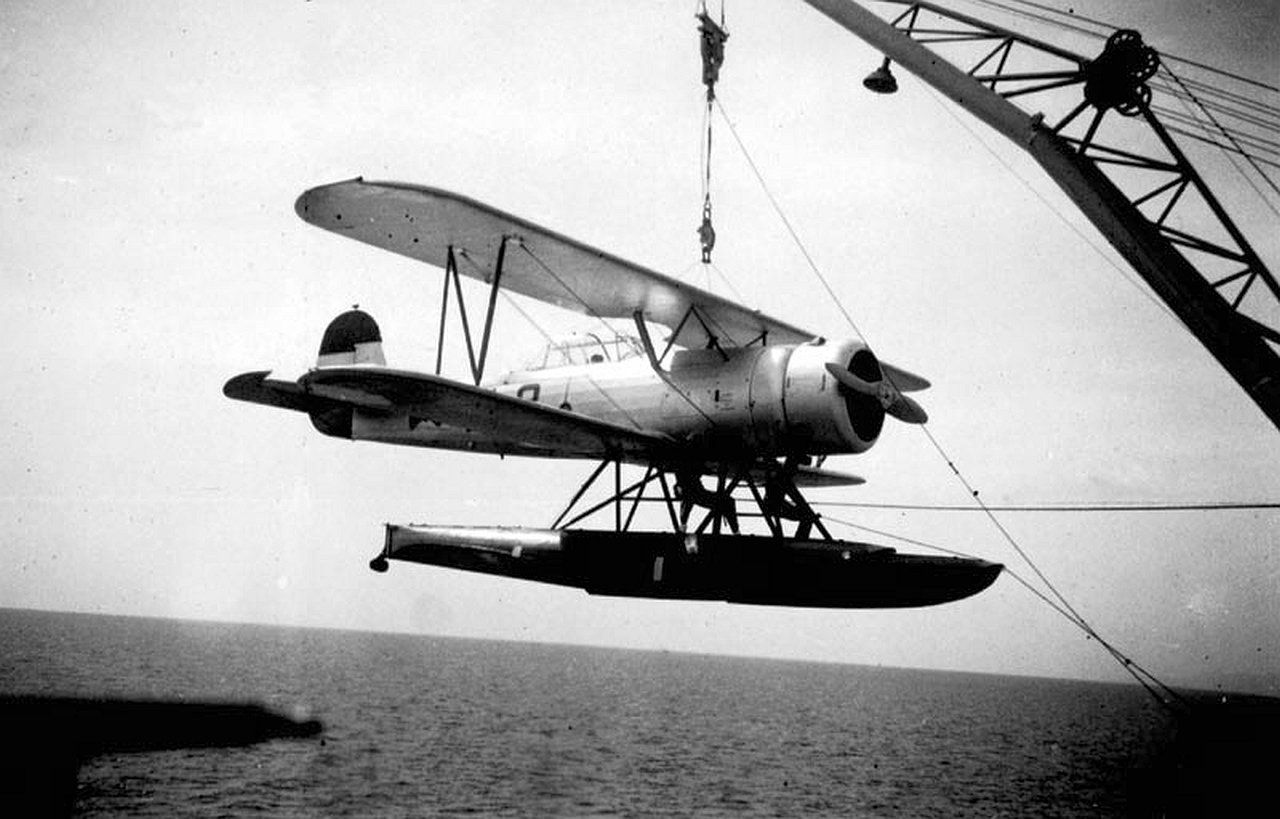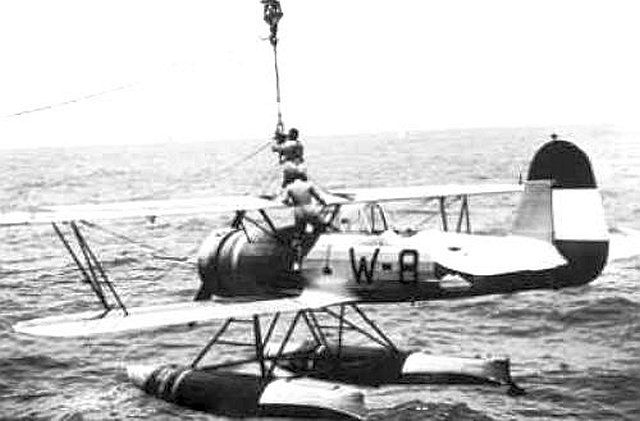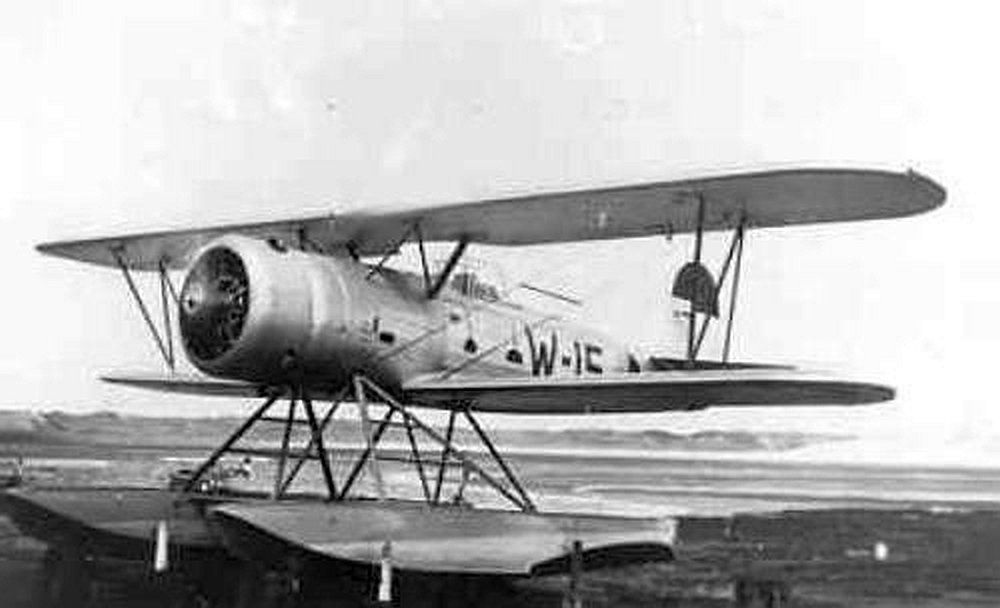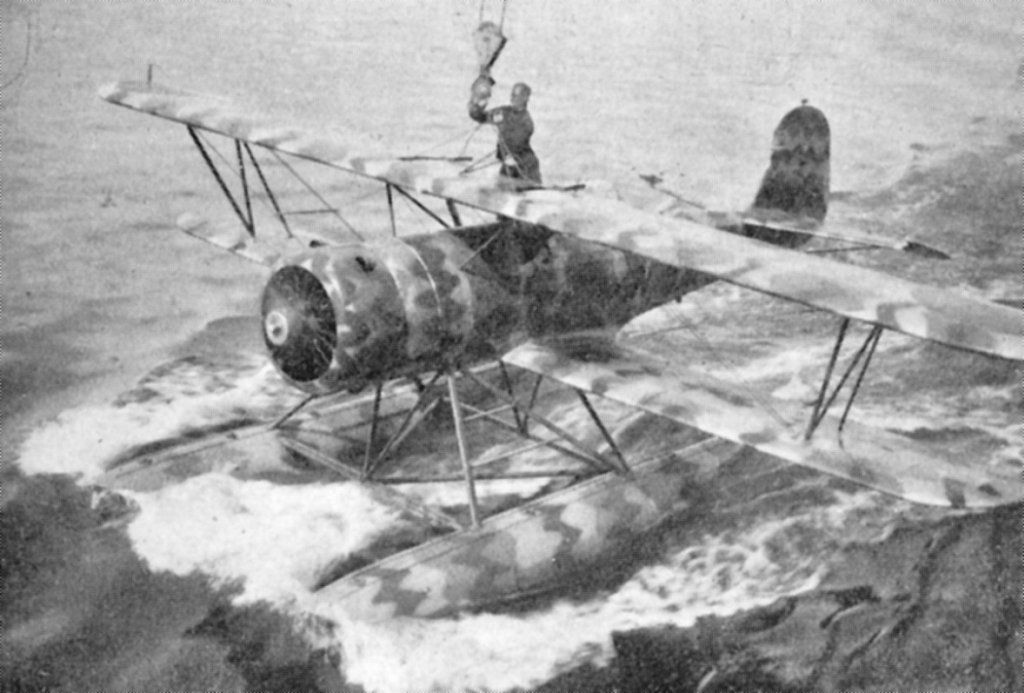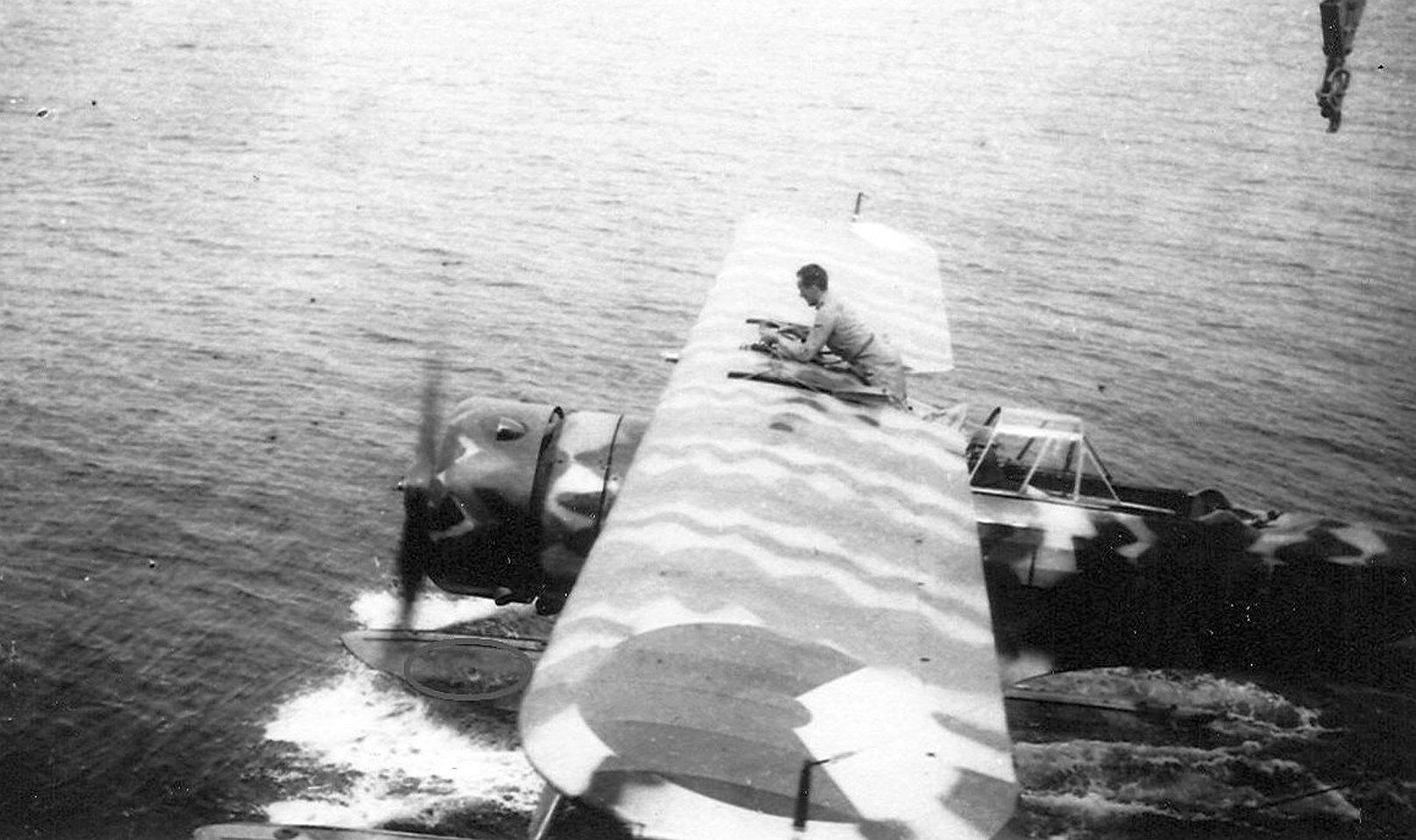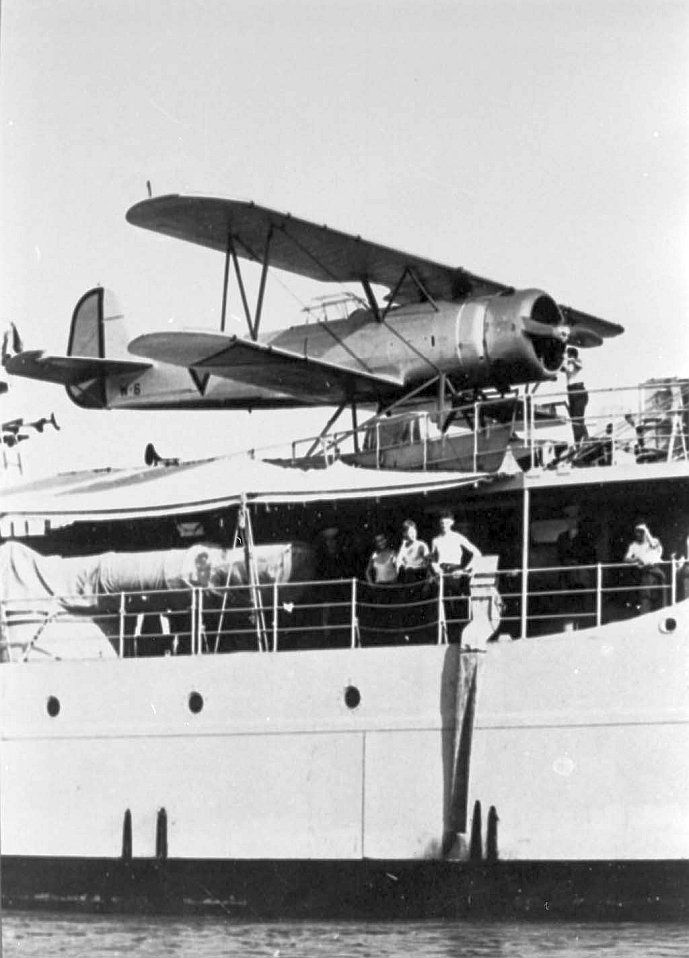The Fokker C.XI-W
In 1935 a two-seater seaplane was developed as a reconnaissance and light bomber, which could be catapulted if necessary. This was to replace the outdated C.VII-W float planes of the MLD.
The fourteen machines for the Naval Air Service were equipped with the 775 hp Wright Cyclone engine.
During the type testing, Fokker carried out catapult tests in northern Germany, where a catapult installation was available.
Originally the C.XI-W had an open cockpit, which in the MLD series could be closed off by a plexiglass sliding roof, as was used in the CX.
Most of these aircraft were shipped to the former Dutch East Indies, where they served during the Japanese attack.
Several C.XI-W were painted in a typical zigzag camouflage scheme when they served on board our cruisers.
Click on the photo to enlarge the photo
-
0
Technical data of the C.XI-W: Engine 775 hp Wright Cyclone, but sometimes the Bristol Pegasus was also used, also with 775 hp. Maximum speed 280 km/h, cruising speed 235 km/h. Take-off weight 2550 kg. Empty weight 1720 kg. Range 620-730 km. Ceiling 6800 m. Wingspan upper wing 13 m. Length 10.4 m. Height 4.00-4.50 m. Wing area 40 m2. The armament consisted of a fixed and a movable FN Browning machine gun 7.9 mm and light bombs.Button -
01
Factory drawing of the Fokker C.XI-W. The MLD, which was the only one to purchase it, later began to modernize it. Its predecessor, the C.VIII-W, was given the option of carrying torpedoes under the fuselage. The C.XI-W became a float plane with the function of SEA RECONNAISSANCE. The C.XI-W was placed in the water with a crane and also hoisted back to a platform on the Navy ships. But the possibility was also tested to test them at Heinkel in Warnemunde (Germany) and to fire them. Delivery took place on 20-07-1935 as W-1 and during the tests in Germany with the civil registration PH-ALC.Button -
02
Here you see the enormous growth of the activities in the Fokker factories of Amsterdam Noord, in this case specifically the construction of naval aircraft. Heavier welding became necessary because of the use on cruisers and many other naval vessels. The construction period of the C.XI-W ran from 1937 to 1938, after which they were shipped to the Dutch East Indies. In the background on the left are the W-6 and the W-8, in a fairly advanced stage of completion. The wings of the C.XI-W were still largely covered with plywood and canvas. The fuselage had a metal covering for the most part and was still covered with canvas at the rear. On the right is a large T.IV bomb/torpedo launcher also in an advanced stage of completion.Button -
03
The production of floats is in full swing and the wooden floats of the past are now made of metal. At the top of the photo there are already a number of floats turned over to finish the bottom.Button -
04
Here the further completion of the metal floats is approaching. Also striking is the ever-improving artificial lighting and the use of more windows. The halls of the Fokker branch were starting to look better.Button -
05
Packed in the very sturdy wooden sea container no. 839 with the contents of the W-2 and the W-4. Two seaplanes could be carried per container. For both floatplanes, the 2 fuselages and 4 wings were carried. This is the moment that the colossus leaves hall 28, on its way to an inland vessel, which then sails to a larger freighter. The final destination is MLD Air Base Morokrembangan not far from Surabaya in the Dutch East Indies.Button -
06
Meanwhile, the same container no. 839 is out of hall 28. On the right, a next series of two C.XI W aircraft is ready for shipment. These are still the W-2 and W-4. of the Marine Luchtvaart Dienst in the Dutch East Indies.Button -
07
A photo taken from the other side, still showing the W-2 and W-4 for the MLD. The whole thing weighs over 7500 kg, probably including the wooden shipping container.Button -
08
Good view of the intakes of sea container no. 864. This also contained two C.XI W float planes, namely the W-5 and W-8, together with 2 propellers and 4 wings. The container has the additional inscription 'Gouvernementsgoed' (Government property) and the abbreviation 'DDM'. The destination by ship is Marinevliegkamp Morokrembangan near Surabaya in the Dutch East Indies.Button -
09
Shortly after the delivery of the prototype (c/n 5399) on 20 July 1935, the MLD designation W-1 is removed. The seaplane is given the civil designation PH-ALC and leaves for the Heinkel company near Rostock (Northern Germany near the Baltic Sea). It is strange that the red-white-blue tail and the rosettes on the wings remain. There, tests with a catapult installation follow. The tests were successful and the MLD wanted to purchase more ship catapults. But the German high command forbade further deliveries. The Second World War began to cast its shadow. Only Hr.Ms. cruiser De Ruijter would be equipped with a catapult installation.Movie of the catapult testing -
10
Test flights with the prototype PH-ALC in Warnemünde near Rostock Germany. Later, back at the MLD at Schellingwoude airfield near Amsterdam East, it flies again as W-1. The Heinkel catapult installation of no less than 16 meters long was extensively tested. It comes to the purchase of the first catapult.Button -
11
The W-1 back in the Netherlands after the tests in Germany. Here at full speed in front of the reopened Marine Vliegkamp Schellingwoude (MVK). The MVK was used alternately by the MLD and the Fokker factories. It was located in Amsterdam on the east side of the IJ.Button -
12
The W-1 probably on Hr.Ms.De Ruijter, although the catapult is not (yet) visible. It is quite possible that there is a visiting day, given the neat civilian clothes that are worn. There is also an MLD'er walking at the bottom in a gala uniform. Or was it the Ministry of War, neatly visiting, before the cruiser started the journey to the Dutch East Indies.Button -
13
The W-1 of the MLD with reduced speed near MVK Schellingwoude. The Dutch East Indies part of the fleet of the Royal Navy received quite a few platforms to carry the C.XI-W. As a result, Hr.Ms.De Ruijter received a second C.XI-W with a fixed platform in addition to the catapult version. This was therefore put on the water with a crane and brought in again.Button -
14
Still the C.XI-W after yet another test flight back at MVK Schellingwoude. In addition to the cruiser De Ruijter, the other cruisers, the Java and the Sumatra, each received a platform. The flotilla leaders Hr.ms. Tromp and Hr.ms. Van Heemskerck also had one. And finally the government ships Rigel and Zuiderkruis.Button -
15
A final check at Marine Vliegkamp Schellingwoude near Amsterdam East. At that time both MLD and Fokker mechanics were active before the departure to the Dutch East Indies.Button -
16
A curious shot of a lovely trip on the IJ in beautiful weather. The W-1 is almost ready and on the deck are the propeller and some wing parts. The second man from the left is Ir. Stok, involved in the flying in and a board member of Fokker. At this moment they pass a few large fuel tanks of shipping company KNSM. The trip goes to Marine Vliegkamp Schellingwoude. MVK Schellingwoude is increasingly getting a mixed function Fokker-MLD.Button -
17
For further testing, the W-1 is taken on board the cruiser De Ruijter here.Button -
18
The long journey to the Dutch East Indies is completed. The W-1 lies here at one of the moorings of MVK Morokrembangan near Surabaya on Java. A nice view of the robust appearance of this C.XI-W, suitable for a catapult launch.Button -
19
In the Dutch East Indies. After intake, the W-1 is secured on the catapult.Button -
20
The loading of the W.1 on the Java Sea near Air Base Morokrembangan. The W-1 c/n 5399 entered service with the Marine Luchtvaart Dienst on 20-07-1935. After the trials with the catapult as PH-ALC, he got the registration W-1 back. After some time he was shipped from the Netherlands, together with other C.XI W sea scouts to the Dutch East Indies. Already on 2 March 1942 he was destroyed by the Japanese. This took place during their advance at the Meer van Tjepoe on Central Java Dutch East Indies.Button -
21
The W-1 is manually brought from the Java Sea via the slipway to the air base shore.Button -
22
Another phase further of bringing ashore from the Java Sea. For that low carts are used that run on metal rails. Fairly heavy work, that is true.Button -
23
Back in Amsterdam for a moment. The plexiglass cockpit canopy is not yet on the floatplane. The second place of the gunner is clearly visible. That is where the movable machine gun is placed.Button -
24
Back in the Indies, where a strange damage to the tailplane has apparently been repaired. The red, white and blue still needs to be reapplied.Button -
25
Meanwhile, the W-1 has arrived at the large hangar of MVK Morokrembangan near Surabaya in the Dutch East Indies. The transport rails that the floating aircraft need when they are on land are clearly visible.Button -
26
From another angle the intake of the W-1. It remains a special operation.Button -
27
The intake from a greater distance still next to the ship.Button -
28
The W-1 is placed on the catapult and has apparently spent the night there. There is still a sail hanging over the gunner's position. Hr.Ms. cruiser De Ruijter still in the early morning. On the catapult track the floats are still well secured.Button -
29
Ready for the next W-1 launch.Button -
30
Just started and at the end of the catapult track. The procedure is briefly described. 1. Engine on and warm up 2. Turn out the catapult track 3. Close the plexiglass cover over the kite site 4. Head against support to the back. 5. Elbows against supports 6. Brace your entire body 7. Now give full throttle 8. Three seconds over the 16 meter track. 9. That is already around 100 km/h 10. On return, retrieve in the old winch way.Button -
31
In March 1937, the prototype W-1 is still in the Netherlands. On the right is Emil Meinecke, one of the regular Fokker pilots in the thirties. On his left is Ir. Frans Stok in the observers and gunners room. Stok was one of the younger talented members of the Fokker management. And he was involved in the development of many new aircraft before the start of the Second World War.Button -
35
A photo of the piloting period of the later W-2 (c/n 5420) in March 1937 at Marine Vliegkamp Schellingwoude. The sea scout entered service with the MLD on 20 July 1937. On the left is Fokker pilot Emil Meinecke and on the far right Ir. Frans Stok, who performed many checks from the gunner cockpit. After a short period in the Netherlands, the W-2 was also shipped to MVK Morokrembangan. In the Dutch East Indies, the W-2 crashed quite quickly, namely on 1 January 1939 near Surabaya. The circumstances were never determined.Button -
36
The W-8 had c/n 5426) and entered service with the MLD on 23 August 1937 after a quick shipment. Here the sea scout has just been retrieved from the dry at Marine Air Base Morokrembangan Dutch East Indies. It is striking that some Marines here still wore the old-fashioned straw hats against the heat. The KNIL and the sailing Navy in the Dutch East Indies sometimes also used them. During the advance of the Japanese army the W-8 was destroyed on 2 March 1942. MLD sources report that this sea scout also flew briefly as W-1.Button -
37
The W-3 c/n 5421 was delivered on 12 February 1938 at Marine Vliegkamp De Mok on Texel. Special is the very clear presence of the movable FN Browning 7.9 mm machine gun operated by the observer/air gunner. At the end of 1939 the W-3 and the W-9 were given orange triangles during the mobilization period. These two C.XI W sea scouts were the only ones to remain in the Netherlands. All others were shipped directly or via France and England to the Dutch East Indies. The W-3 was destroyed by the Germans on 12 May 1940 at Vliegkamp De Mok. Together with the W-9 they were eventually parked at Bergen Airfield, heavily damaged. Actually completely incomprehensible. See photo 69 and 70.Button -
38
One of the few beautifully photographed catapult take-offs of a C.XI W sea reconnaissance ship. It concerns W-4 taking off in the Java Sea from Hr. Ms. cruiser De Ruijter. The W-4 was delivered on 2 June 1937 with c/n 5422 and shipped to the Indies. During the Japanese invasion of the Dutch Indies it was destroyed at Air Camp Morokrembangan on 1 March 1942.Button -
39
The W-5 was delivered to the MLD on 2 June 1937 with c/n 5423. Here it lies in front of the Marine Vliegkamp Schellingwoude near Amsterdam. The sea scout soon went by ship to MVK Morokrembangan near Surabaya in the Dutch East Indies. At the end of 1937 it was still a participant in the Avia exhibition in the Houtrusthallen in The Hague.Button -
40
The W-5 in all its glory in the Houtrusthallen in The Hague at the end of 1937. Shortly after, it was shipped to NI. Incidentally, the floats used to be made of wood. This changed and they were now manufactured from duraluminium and Alclad paint. The fuselage still consisted of mixed construction, namely a tube frame with canvas, wood and aluminium. The wing was largely made of wood. Little is known that there was an extra control in the observer's cockpit, perhaps for training flights.Button -
41
The W-5 of the Marine Luchtvaart Dienst, which has arrived in the Dutch East Indies. In this case painted with the tried and tested sawtooth camouflage. The MLD experimented with this and a slightly different version on a regular basis. See photo 45.Button -
42
Still in the Netherlands at the Avia exhibition in 1937. To make it even more beautiful, standing in a large pond.Button -
43
The W-5 in the Dutch East Indies. On 1 May 1939, the sea scout crashed near MVK Morokrembangan. Nothing is known about the circumstances.Button -
44
And another nice picture of the W-5 in the bath in The Hague. In the background we see the Koolhoven PH-AKJ and above it the Fokker D.XXI. Behind it is the Aviolanda stand. At the end of 1937 the sea scout is shipped to the Dutch East Indies and does not make it to the Japanese invasion.Button -
45
Another nice photo of the W-5 in slightly different camouflage colours. Here the W-5 is being lifted onto Hr.Ms. Java.Button -
47
Taking in c/n 5426, registered as W-8 at Hr.MS. De Ruijter. It was the successor of the W-7 delivered 23-8-1937.Button -
48
How hot could it be in the Dutch East Indies, later Indonesia The W-6 sea scout just on the water of the Java Sea. And now via the metal rails on dry land in front of the large hangar of MVK Morokrembangan near Surabaya.Button -
49
On June 3, 1937 Fokker delivers c/n 5424 to the MLD, which gives it the registration W-6. From that moment on, the sea scout becomes the flotilla leader of Hr.Ms.Tromp in the Dutch East Indies. In this photo, the C.XI W is clearly on exercise. A fatal accident on August 7, 1940, well before the Japanese invasion, leads to the elimination of this W-6.Button -
50
One of the permanent catapult sea scouts of the MLD in the Dutch East Indies is the W-7. With c/n 5425 the aircraft is delivered on 3 June 1937. The W-7, stationed on Hr.Ms.de Ruijter, crashed on 26 September 1939 in the Klabat Bay near the island of Ban(g)ka. It happened while collecting mail for the Cruiser, which was sailing in the Java Sea. Off. Pilot 2 H. Stoutjesdijk died. The gunner/observer was only injured. On the De Ruijter the W-7 was succeeded by the W-8. All in all the first accident during the Dutch East Indies mobilization period.Button -
51
Three nice action photos of the W-8 of the Marine Luchtvaartdienst Here the W-8 followed by the Dornier Do24, also of the MLD. Entered service as c/n 5426 on August 23, 1937. During the Japanese invasion the W-8 (sometimes called W-1) crashed on March 2, 1942.Button -
52
To the left of the rosette (and also to the right) are two semi-circles. These are the boarding places for the gunner/observer and the pilot. The continuous vertical stripes running upwards indicate where the boarding places are seen from above. This is necessary when boarding in order to connect the C.XI W. In this photo you can clearly see that the sea scout is stationary and the engine is off. So it will be hoisted in shortly. The gunner ties up and the pilot follows to help.Button -
53
From the previous photo, those entry points are often better visible on other photos. But on photo 52, the action as such can be followed well. On this photo, a nice action photo of a launch of the W-8.Button -
54
Three C.XI W sea scouts, before the mobilization period in the Netherlands. On the left the W-14 that quickly went to the Dutch East Indies. The W-9 in the middle, remained in the Netherlands. The W-9 was delivered to the MLD on January 11, 1937 with c/n 5427. On the next photo it has already been repainted in the MLD mobilization colors.Button -
55
The same W-9 but now in the Dutch mobilization period. It is equipped with an orange tailplane and the orange triangles and is located at MVK De Mok on Texel. From emergency air base Veere it flies together with the W-3 in the night of 13 to 14 April 1940 towards Camperduin near Petten. There the W-9 crashes almost vertically into the North Sea on 14 April 1940 at 02:00 in the very early morning. Sgt. Pilot C. Knaapen and Off. Observer H. Langenhoff do not survive the accident. The cause remains unclear due to the later German attack. The W-3 does survive that trip and is bombed by the Germans on 12 May 1940 at MVK De Mok. Both Sea Scouts are stored at the heavily damaged airfield Bergen (NH) for unknown reasons.Button -
56
The W-10 was delivered to MLD on 23 August 1937 with c/n 5461. Here it is already positioned on the platform of one of the ships of the Royal Navy. With the very important crane clearly visible.Button -
57
Still in the Netherlands in a slightly different position. Shortly after, the W-10 is also shipped, on its way to the Dutch East Indies. During the Japanese invasion, the W-10 is disabled on March 2, 1942. This takes place at Marine Air Base Morokrembangan.Button -
58
Little is known about c/n 5462, except that it was delivered on 23 August 1937 as W-11 (we also have no photo available). And the aircraft was destroyed on 2 March 1942 near MVK Morokrembangan. ---------------------------------------- Much more is known about the W-12 with c/n 5463 delivered to the MLD on 01-12-1937. It was one of the C.XI W sea reconnaissance aircraft that was also active on Hr.Ms. De Ruijter. A Japanese fighter spotted the W-12 during one of the Japanese attack flights. The sea reconnaissance aircraft crashed on 18 February 1942, north of Tjepoe between Semarang and Surabaya in Central Java. Pilot Ltnt ter Zee G. van den Boom was killed. A second version is that Lt. ter Zee G. Van den Boom survived the attack with his parachute. The observer/gunner who had no parachute would have held on to the pilot. The shock of the parachute opening would have caused it to come loose and crash to its death.Button -
60
The W-14 with c/n 5465 in a very awkward position. The delivery to the MLD in the Netherlands takes place on 18 January 1938 at the same time as the W-15. During the mobilization period this sea scout is with the guard groups on the Alkmaarder Meer.Button -
61
A very special photo of the W-14 probably taken at MVK De Mok. Already equipped with the orange mobilization colors. Something is wrong with it. The text "W-14" still has to be applied. The engine is also free on the right and there are some engine plates on the jetty. During the German invasion in May 1940, the W-14 operates from emergency air base Veere (Zeeland). During one of the patrol flights, the sea scout manages to escape from a group of German bombers that are on their way to Valkenburg. On May 14, just before the capitulation, the W-14 escapes together with 26 other MLD seaplanes. They reach Boulogne (Northern France) and reach Calshot Airfield (England) on May 26, 1940. From there, the seaplanes are shipped and arrive safely in the Dutch East Indies. On March 2, 1942, the W-14 comes to an end due to destruction by the Japanese. Flown and sailed on three continents!!Button -
63
First some brief information about the W-13 (c/n 5464) that was delivered to the MLD on December 3, 1937. The sea scout was shipped to MKV Morokrembangan Netherlands East Indies quite quickly. On June 17, 1941 the W-13 crashed in the vicinity of Surabaya East Java. No photo of the W-13 The crew that died was Ltnt ter Zee H. Baron Van Lawick and Ensign J. Anzembergen. --------------------------------------------------------------------------- The last C.XI-W delivered was the W-15 with c/n 5466 and delivery date January 18, 1938. It became one of the few sea scouts that received the so-called sawtooth camouflage painting in the Dutch East Indies. The W-15 was mainly used on Hr.Ms Kruiser Java. Quite a few C.XI-W seaplanes sank quite anonymously with the sinking ship. The MLD source gives March 2, 1942 as the end of this plane, others keep it at June 1942. In any case it happened in the vicinity of Marine Air Base Morokrembangan. Central Java.Button -
64
The last C.XI-W is here on dry land. but with a running engine. Still in the plain grey livery but in the Dutch East Indies. So probably arrived not long ago.Button -
65
Beautiful shot of the same W-15 with the special sawtooth camouflage paint. And that in a very characteristic Indian environment. Some sailors who are working on it still wear the well-known straw hats. The rosettes are still difficult to see on the fuselage and wings.Button -
66
The final step before hoisting the W-15 in its 'camouflage suit'. The red-white-blue rosettes and markings are hard to distinguish, which is also the intention. The engine is still running to keep up with the ship. The mooring was very dangerous and also cost a lot of extra time to get the speed going again. This work was often done by the gunner/observer. The W-15 was usually in use on Hr.Ms Java.Button -
67
The end point of the hoist installation is approaching at the top right. The engine is still running at a moderate speed. The hooking up will take place soon. After which the speed of the warship, the Hr.Ms. Java, is immediately increased again.Button -
68
Just like in the Netherlands, all aircraft in the Dutch East Indies received the orange triangle when the mobilization started. The Dutch declaration of war on Japan preceded this. Hence you see here the only and therefore rare photo of a Dutch East Indies C.XI W, the W-6, delivered on June 3, 1937. During that mobilization period, it received new country markings on the tail, wings and fuselage. The W-6 is here on the platform for the Sea Scouts. Presumably in this case on Hr.Ms. Java. The W-6 crashed on August 7, 1940.Button -
69
In a badly damaged hangar at Bergen Airfield (NH) are two equally damaged C.XI-W seaplanes of the MLD. They are respectively the W-3 and the W-9 that crashed on 12-05-1940 and 14-041940. The W-3 was bombed at MVK De Mok (Texel) and the W-9 crashed in the North Sea at Camperduin (near Bergen). Perhaps at that time they were still thinking about restoration and therefore transport to Fokker in Amsterdam-Noord. The two seaplanes are parked diagonally behind each other.Button -
70
A late photo of Vliegpark Bergen (NH) taken on 11, 12 or 13 May 1940. In the hangar in the foreground are the W-3 and the W-9 of the MLD on the left. The devastation caused by the Germans is of unprecedented magnitude. And that on a brand new complex only a few years old. So this is how you treated neutral countries.....Button
A total of 15 C.XI W floatplanes were built in the Amsterdam Fokker factory.
The W-3 and 9 remained in the Netherlands for various services and the Germans did quite a bit with them.
In addition to those two aircraft, the other thirteen floatplanes went to the MLD in the Dutch East Indies.
These were the W-1-2-4-5-6-7-8-10-11-12-13-14 and 15.
Most of them went by ship from Amsterdam directly to Batavia.
A pair flew via northern France (Boulone) to England (Calshot) in May 1940.
From there, we still traveled by ship to the Dutch East Indies.
The C.XI-W, as a "precursor" to the aircraft carriers, did not do too badly.
The Sea Scouts flew their missions to check the route ahead of the slower ships.
It is a pity that one catapult installation was not followed by three other Heinkel catapults.
Furthermore, the somewhat late production and delivery can be seen as a disadvantage.
The mixed construction also played a role in the fuselage and wings.
This may also apply to the last C-type, the Fokker C.XIV-W.
However, that is a completely different concept that we will discuss next.





